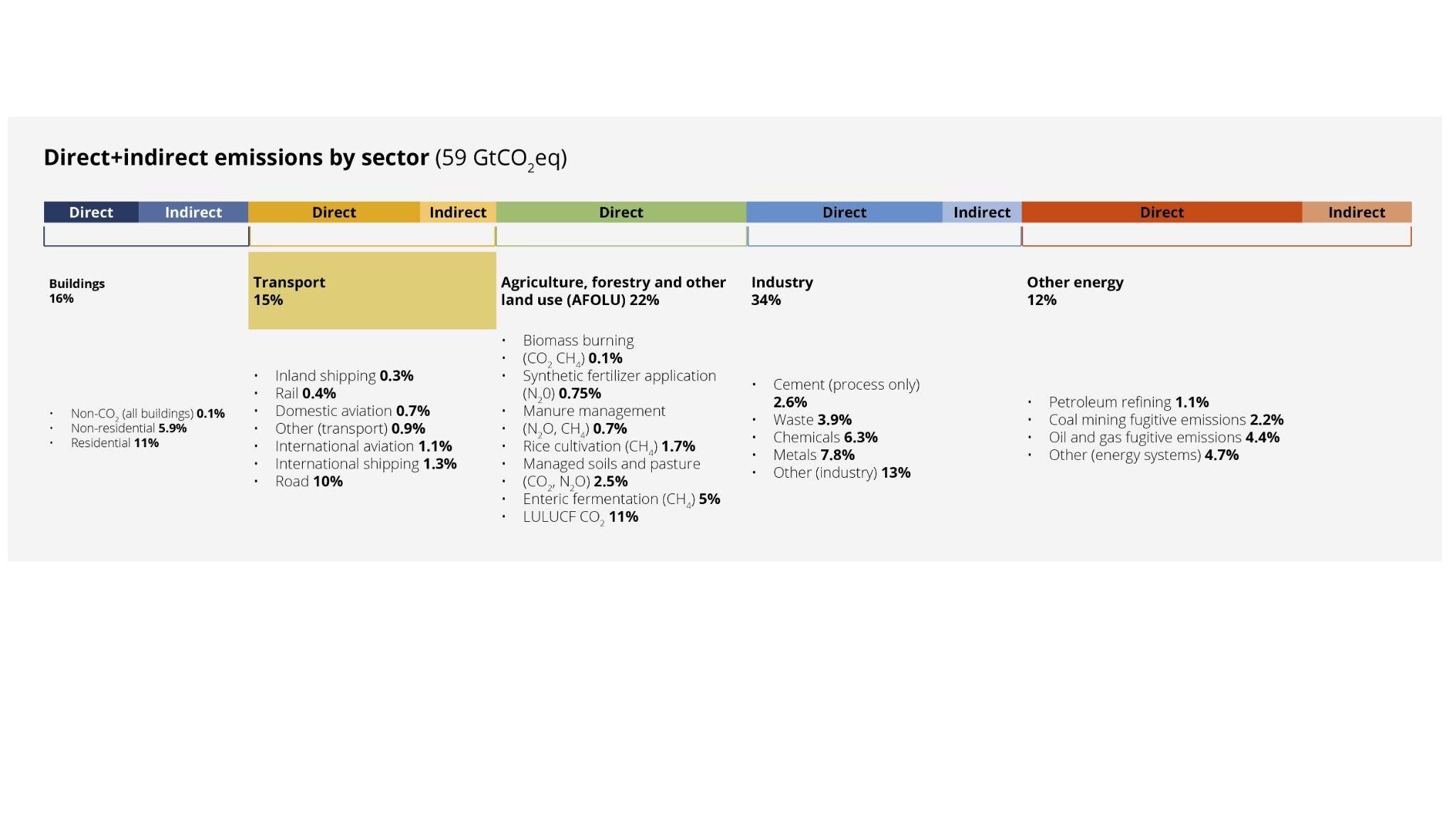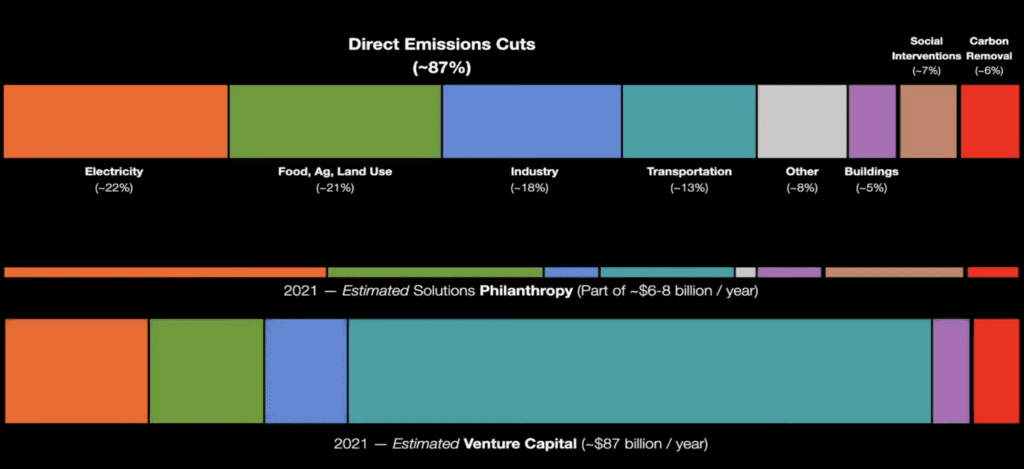The Pathway to Climate Solutions: Is Venture Capital Getting it Wrong?
I am a strong believer of two things:
1. To keep global warming within 1.5˚C, we need to make climate action profitable for the capitalist economy. And for that, it is imperative for entrepreneurs to find innovative business models.
2. All the climate solutions that we need already exist – we don’t need any new innovation. What we need as entrepreneurs is to pick the right technology, put the right business model on top of it, and then take it to scale within this decade.
But what is the path to this climate positive future?
Surely if we can scale up the popular technologies such as Solar, Wind, and Electric Vehicles, that would do the trick?
Climate solutions that attract the most investment and make the most noise are not necessarily the ones that the world needs the most. It’s the classic case of Availability Bias – the more we hear about something, the more we feel it must be important.
For example, air travel is popularly believed to be more dangerous than driving a car even when most data proves otherwise. This is simply because every plane crash swallows the news for months and years; during this time thousands of car crashes around the world would have killed multiple times more people than the plane crash.
So, should we not invest in popular technologies to scale them up?
Almost 40% of all investment made by venture capital (VC) since 2020 has been in Transportation (source: CTVC).

Whereas only 15% of all annual emissions can be attributed to Transportation (Source: IPCC).

So, are VCs getting it wrong? Or are they?
The primary motive of VC is to generate returns FAST! So, it would be no surprise that only the sectors that are able to generate returns, i.e., have matured to business models that can generate returns attract the most investments. Prime examples being Transportation, Solar, and Wind.
A similar estimate from Project Drawdown shows that although philanthropy is doing a balanced job at funding emissions cuts across sectors, VC is investing almost 60% of its huge $90 billion corpus on Transportation. In the words of Drawdown Director, Jonathan Foley, “perhaps in the hopes of becoming the next Elon Musk?”

So, what happens to the solutions that we actually need the most? How do they cross the chasm and “mature” to a level where they can be fueled to scale?
More importantly, what are these solutions that need to scale?
My go-to reference is Project Drawdown’s Library of 100 Climate Solutions, which explains, measures, and establishes each one’s impact. The solutions are broken down to detail within a sector. For example, Solar is divided further into various different solutions within Solar, and then impact is assessed for each one.
Let’s take a quick look at the Top 10 solutions across Scenario 1 (roughly in line with 2˚C temperature rise by 2100) and Scenario 2 (roughly in line with 1.5˚C temperature rise at century’s end).
- Reduced food waste: Roughly one-third of the world’s food is never eaten. By reducing loss and waste, we can reduce the need for land and resources used to produce food as well as the greenhouse gases released in the process.
- Plant-rich diets: Animal agriculture is a significant source of greenhouse gas emissions. Favoring plant-based foods reduces demand, thereby reducing land clearing, fertilizer use, and greenhouse gas emissions.
- Onshore wind turbines: Onshore wind turbines generate electricity at a utility scale, comparable to power plants. They replace fossil fuels with emissions-free electricity.
- Utility-scale solar photovoltaics: Solar photovoltaics can be used at utility-scale—with hundreds or thousands of panels—to replace fossil-fuel electricity generation.
- Tropical forest restoration: Many tropical forests have undergone clearing, fragmentation, degradation, or depletion of biodiversity. Restoring these forests restores their ability to sequester carbon.
- Clean cooking: Clean cooking can reduce pollution from burning wood or coal in traditional stoves and protect human health.
- Family planning and education: Slower global population growth, a cascading outcome of increased family planning, and rising education levels contributes to reduced greenhouse gas emissions.
- Distributed solar photovoltaics: Whether grid-connected or part of stand-alone systems, rooftop solar panels and other distributed solar photovoltaic systems offer hyper-local, clean electricity generation.
- Refrigerant management: Fluorinated gases, which are widely used as refrigerants, have a potent greenhouse effect. Managing leaks and disposal of these chemicals can avoid emissions in buildings and landfills.
- Alternative refrigerants: Fluorinated gas refrigerants are powerful greenhouse gases. Alternatives, such as ammonia or captured carbon dioxide, can replace them over time.
You’ve probably never heard about half of these.
Why is that?
If I asked you to choose a solution you want to work in, which one would you choose? You’d probably go for Solar, Wind, or food-related solutions. If you go for something else, you are one of the few.
We as humans tend to gravitate towards familiarity. And the same happens when we make our career choices. We don’t want to take “too much risk.” And hence more entrepreneurs end up working in familiar fields such as energy generation and transportation. As a result, these become much more popular than other climate solutions, maturing earlier, and attracting more investments from VC, in turn fueling rapid growth.
Having said that, informed decision making is the key to the path towards a climate-positive future.
Also, don’t forget to check out the full list of 100 Climate solutions on Project Drawdown: https://drawdown.org/solutions
About the author
Ankita Vijayvergiya
Co-founder at BillionCarbon and NatureHealers.
An MBA from London Business School and a Computer Science Engineer from BITS Pilani, India, Ankita is a Climate Reality Leader, and Linkedin Top Voices 2022.
She is currently building BillionCarbon where the mission is to empower 1 billion tons of CO2e mitigation and 100,000 climate jobs by 2030.
With over 14 years of global experience in Technology, Startups, and Scaling Businesses, her expertise spans a multitude of industries. Her passion lies in establishing and growing new solutions for the evolving needs of our society – specifically Climate Change.

